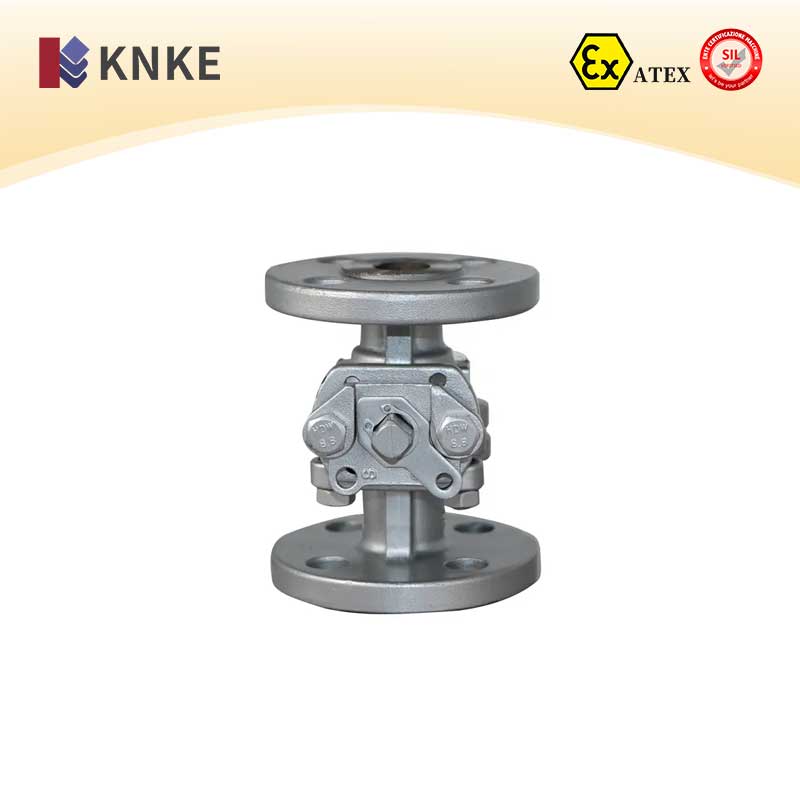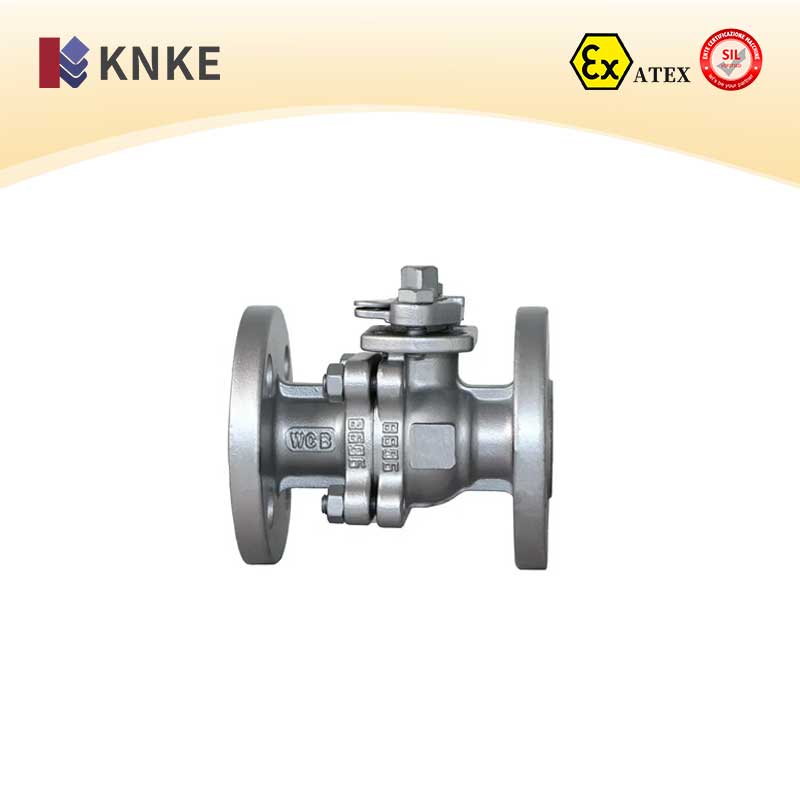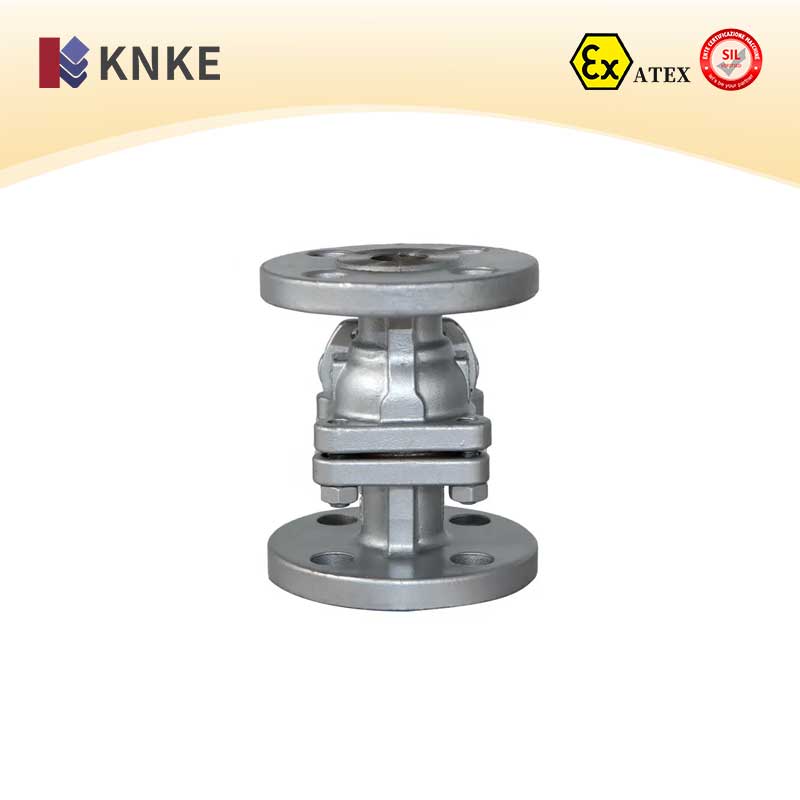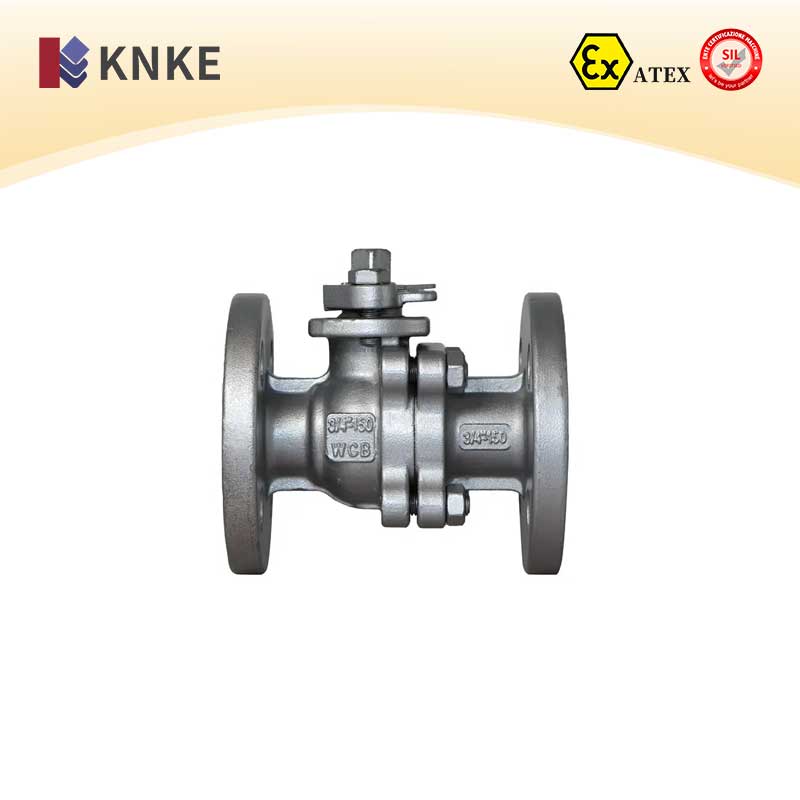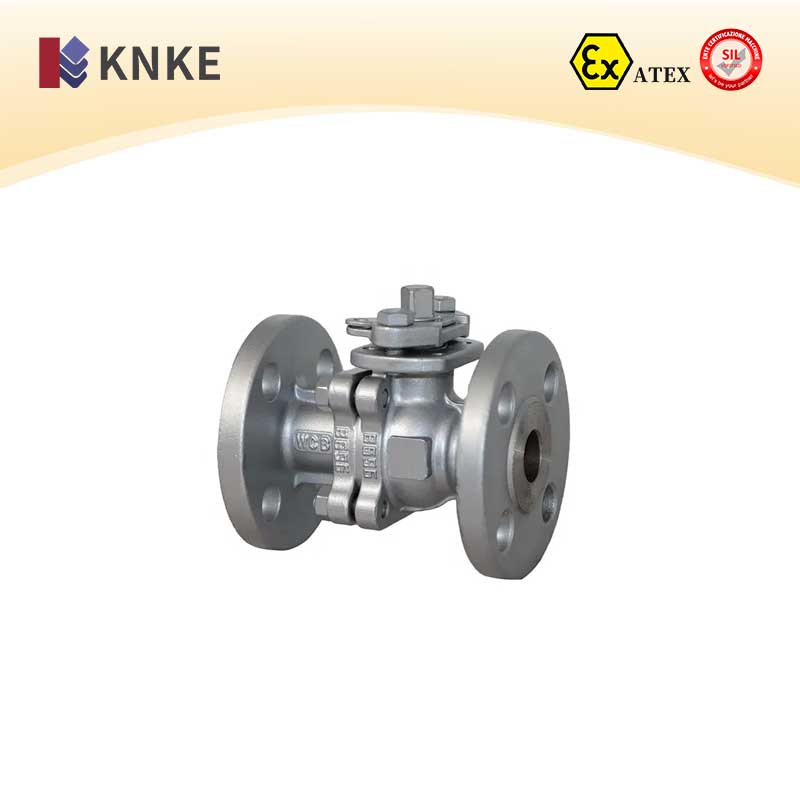Description
KNKE Cast Steel Ball Valve Overview
The KNKE cast steel ball valve features a valve body made from carbon steel casting. The valve stem drives the ball, which rotates around its axis. This valve is designed to cut off the medium in pipelines. With low torque, easy operation, and excellent sealing performance, it efficiently handles switching applications. The compact design makes the valve easy to operate and maintain, and it works well with various media, including water, steam, solvents, acids, and natural gas. It also performs reliably under demanding conditions like oxygen, hydrogen peroxide, methane, and ethylene.
KNKE Cast Steel Ball Valve Specifications
| Parameter | Specification |
| Product Name | Cast Steel Ball Valve |
| Nominal Diameter | DN15 to DN800 |
| Structure Type | Spherical |
| Nominal Pressure | 1.6 MPa to 32.0 MPa |
| Connection Type | Flanged |
| Operating Temperature | ≤550°C |
| Actuation Mode | Manual |
| Body Material | Cast Steel, Carbon Steel (WCB) |
| Standards | GB, DIN, API, ANSI |
| Applicable Media | Water, Oil, Gas, Liquids |
| Brand | KNKE |
KNKE Cast Steel Ball Valve Features
- Minimal Flow Resistance: Among all valve types, the cast steel ball valve exhibits the lowest flow resistance. Even scaled-down models maintain excellent flow efficiency.
- Quick and Easy Operation: The valve completes the full opening or closing action with just a 90° turn of the valve stem, enabling fast and effortless operation.
- Reliable Sealing Performance: The valve seats are made from materials like PTFE (polytetrafluoroethylene), ensuring tight sealing. The sealing force increases as the medium’s pressure rises, providing excellent leak protection.
- Durable Stem Sealing: The stem rotates during operation, preventing damage to the stem seals. The back-sealing design further enhances sealing performance, increasing as the medium pressure rises.
- Automation Ready: The 90° rotation of the valve stem makes it easy to integrate into automated systems. It can be outfitted with pneumatic, electric, or hydraulic actuators for remote control and advanced automation.
- Smooth Passage: The smooth passage of the valve prevents medium deposition and allows for cleaning of the pipeline using a ball.
Key Performance Specifications of KNKE Cast Steel Ball Valve
| Performance Indicator | Specification |
| Design and Manufacturing | GB12237 |
| Structural Length | GB12221 |
| Flange Dimensions | GB9113 |
| Pressure-Temperature | JB79 |
| Testing and Inspection | GB/T13927, JB/T9092 |
KNKE Cast Steel Ball Valve Pressure Testing
| Nominal Pressure (MPa) | 1.6 | 2.5 | 4 |
| Strength Test (Shell) | 2.4 | 3.8 | 6 |
| Water Seal Test | 1.8 | 2.8 | 4.4 |
| Air Seal Test | 0.4-0.7 | ||
Materials of Main Parts
| Part | Material Options |
| Valve Body | WCB, ZG1Cr18Ni9Ti, CF8, CF3, ZG1Cr18Ni12Mo2Ti, CF8M, CF3M |
| Ball Stem | 304, 1Cr18Ni9Ti, 316, 316L |
| Seat | PTFE, Glass-Filled PTFE, PPL |
| Shim | PTFE, Stainless Steel/Flexible Graphite |
| Stem Seat | PTFE, Stainless Steel/Flexible Graphite |
| Packing | PTFE, Enhanced Flexible Graphite |
| Gland | 1Cr18Ni9Ti, 304, 316, 316L |
Temperature and Medium Range
- Temperature Range: -29°C to 550°C (depending on material)
- Suitable Mediums: Water, Steam, Oil, Nitric Acid, Acetic Acid, Urea, Strong Oxidizing Media, and more.
Maintenance Tips for KNKE Cast Steel Ball Valve
- Storage: Store the valve in a dry, ventilated indoor space, ensuring the valve stem is free from any load.
- Storage Position: Keep the valve fully open and seal both flanges at the ends to protect the valve.
- Rust Prevention: Apply a rust inhibitor to the stem and machined surfaces for protection during storage.
- Regular Inspection: Regularly inspect stored valves, clean any dirt, and apply rust inhibitors as needed.
Instructions for Use
- Operating Conditions: Confirm that the valve’s operating conditions match those specified on the nameplate and in the user manual.
- Flow Adjustment: The valve can handle minor flow regulation in addition to its main function of opening and closing.
- Opening the Valve: Use the stop block to identify the fully open position during operation.
- Do Not Use Leverage: Do not use additional levers or power tools. Manually operate the valve by rotating the handwheel.

